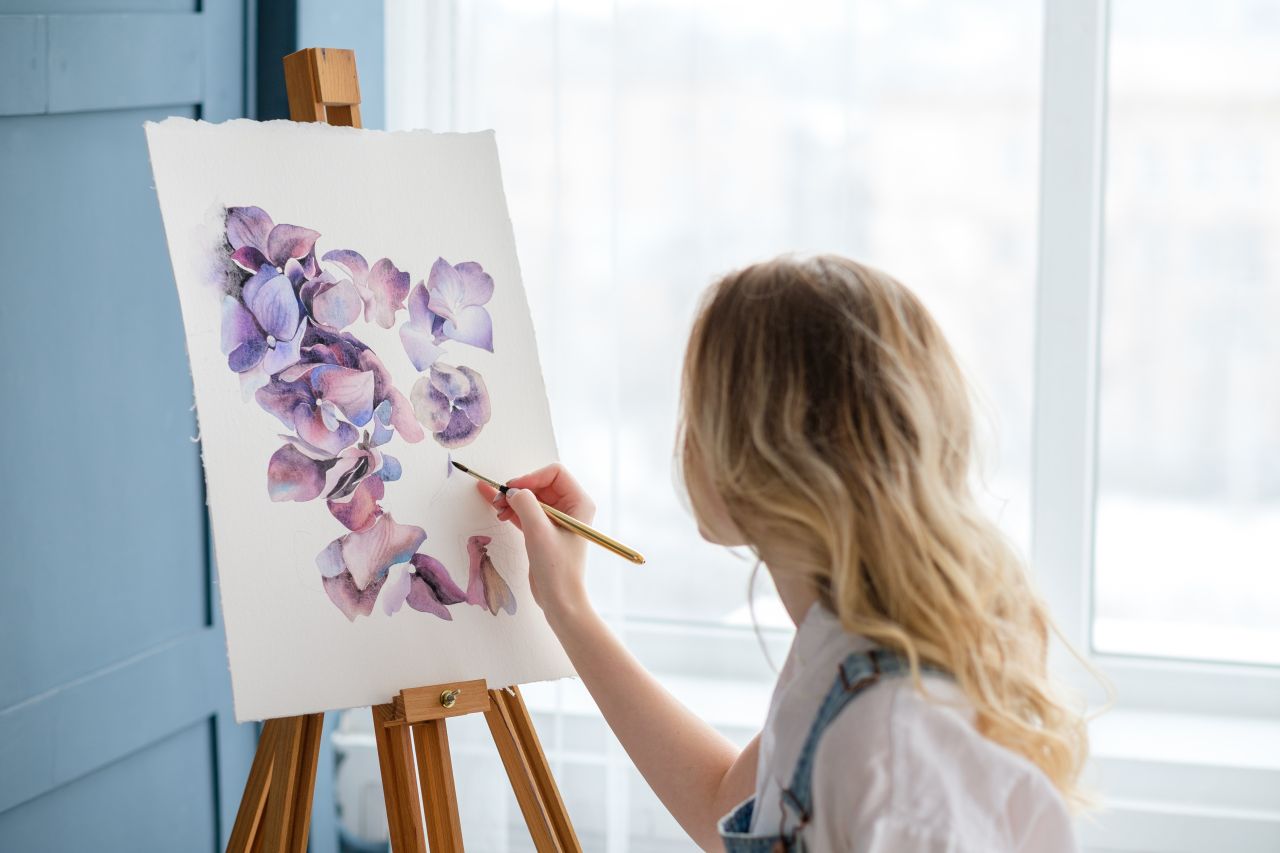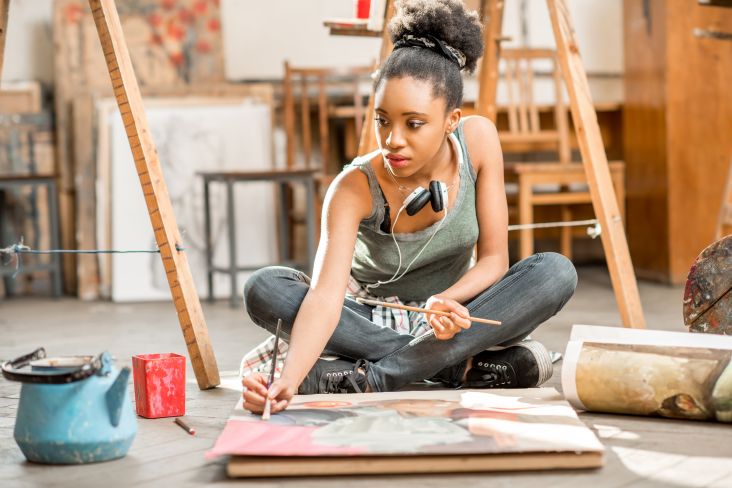How class act creatives can branch out into teaching
There's more than one way to make money from your art. Brand partnerships, online stores, selling through stock sites; all of these can go on top of your client work.

Image licensed via Adobe Stock
Another increasingly popular option is to tutor fellow creatives. Sites such as Skillshare are an obvious platform to host classes on, while this year has seen more and more designers and illustrators set up their own courses via their official homepages.
If you've never thought about teaching before, then you may be understandably cautious. But look at it this way: like your other ventures, teaching can be very much a valuable way to diversify your income, as lettering artist Lauren Hom tells Creative Boom.
"Online classes was probably the biggest way for me to diversify my business that I didn't even know was possible," she explains. "I'm really grateful that I spent the last three years before Covid-19 building up my online courses, learning how to teach and market and create classes. Luckily client work hasn't slowed down that much, but if it did, then my classes would be there to kind of pick up the slack."
Lauren's online tutoring has also seen her become more selective with what jobs she decides to do. "I'm not relying on my clients for 100% of my income, so I get to be more selective with the client work I take on."
Teaching online or in-person can also be highly rewarding. Ask designer Gordon Reid, founder of Middle Boop Studios, who, before the pandemic, regularly gave lectures and workshops at universities all over the country and further afield.
"It's incredibly fulfilling knowing you're giving back and hopefully having impact onto the next generation of creatives' work and careers," he tells us. "I always feel it's mutually beneficial, too. I'm introduced to so many passionate and driven young creatives, some of which I take on to work with me at my studio or certainly keep in contact with regularly and get to watch proudly as their careers develop knowing I've helped."
From creative to class mentor
For illustrator and letterer Lisa Maltby, the idea of "switching" from creative to tutor was never a daunting one, even to someone like her with little teaching experience.
"I don't really see those things as separate, to be honest. Being creative is about communication and helping people to see a different perspective, and mentoring is just another form of that," she asserts. "I enjoy writing and speaking, and I also mentor individuals too – it's rewarding because you see a direct result from something you've imparted. For me, both those things are about making information more accessible to everyone."
If you are shy by nature, then you may be wary of talking in front of a large student body. But for Gordon, it's the exact opposite. "Talks can be pretty nerve-wracking. Strangely the smaller ones are worse than, the bigger staged events with thousands of people."
If this worries you, why not go online? You could probably make more money that way than in-person teaching, as Lauren reveals.
"There's really only so many people that can fit in a room," she points out. "With the internet now there's more opportunity than ever for people to discover your work, and online classes were a natural progression where I could scale what I was teaching to a larger audience and be helpful to more people."
You don't have to necessarily teach art
Lisa launched an online course this year called The No Bullshit Guide to Making a Living From Your Art, which pretty much does what it says on the tin and more.
"I hope, by sharing knowledge," she says, "that more people feel able to give themselves a seat at the table and that the future of the creative industry is a lot more diverse."
Your classes can very much go beyond live streaming as you work or teaching tried and tested methods; there's a whole industry you can inform the next generation about for them to make less of the mistakes you may have made.
Gordon agrees, saying a lot of designers would benefit from what he likes to mentor people on. "I focus on a lot of things you don't get taught at uni. Not every designer is going to need to know the business side as deeply, for a lot will spend their careers working in agencies and purely focusing on the creative. But every designer or creative at some point will have a block or a time where they're a little burned out or broken, and talks or mentoring like mine or from other creatives will surely be of help."
How to put a course together
For Lisa, writing her No Bullshit Guide was a big commitment. "I've always kept so many notes for blog posts, but blogging didn’t always give the depth that I felt was needed. I knew the topics I wanted to cover, but structuring it was difficult because so many topics cross over, so I had to break it down into easily digestible sections."
"Pitching it at the right level was a challenge, too, so I also had a few test students who were able to go through it and give me feedback, which really helped. I also wanted to find the right balance between being an in-depth resource and keeping costs low, because often illustration courses are costly and this presents another barrier for people who may struggle for money or maybe up to their neck in student debt."
"I wanted to create something that students can do at their own pace that offers online discussion if needed. I'm also hoping to build upon it and offer more options for those who may want more bespoke help."
How to promote a course
Lisa uses social media to promote most of her projects, where she has built a supportive online community that is happy to share and promote. "I am usually very honest on social media, so I think people knew when I said it would be "no bullshit", that I meant it. I created a series of illustrations, videos and animations that reflect the down to earth tone of the course, keeping everything really simple and clear. I designed the whole course to be easy to follow, with colour-coded sections and light-hearted doodles, so nothing feels heavy."
"The response has been brilliant, and I think that often speaks far more than anything I could say myself – when illustrators I'm not associated with recommending it to others, that's an excellent feeling."
How to inspire your students
The biggest tip from Gordon is to look into your past if you want to succeed as a mentor.
"Throw yourself into it," he advises. "Remember what it was like when you were at uni or school, remember the tutors or teachers you liked and why you liked them. Be like them and remember what it was like to have no experience."
"Also, ensure you show students that as long as they put the graft in, they can achieve what they want to. Be open to their ideas, be critical constructively, be open enough to let the students work the problem out for themselves – and give guidance and inspire."




 by Tüpokompanii](https://www.creativeboom.com/upload/articles/58/58684538770fb5b428dc1882f7a732f153500153_732.jpg)

 using <a href="https://www.ohnotype.co/fonts/obviously" target="_blank">Obviously</a> by Oh No Type Co., Art Director, Brand & Creative—Spotify](https://www.creativeboom.com/upload/articles/6e/6ed31eddc26fa563f213fc76d6993dab9231ffe4_732.jpg)


](https://www.creativeboom.com/upload/articles/21/212b36fa1d576a9ea1aeb322ef0cffd6a5009e61_732.png)







 for Creative Boom. © Creative Boom](https://www.creativeboom.com/upload/articles/88/885afc2954af947d8d1957fb08e948aeef15dae7_732.jpg)




